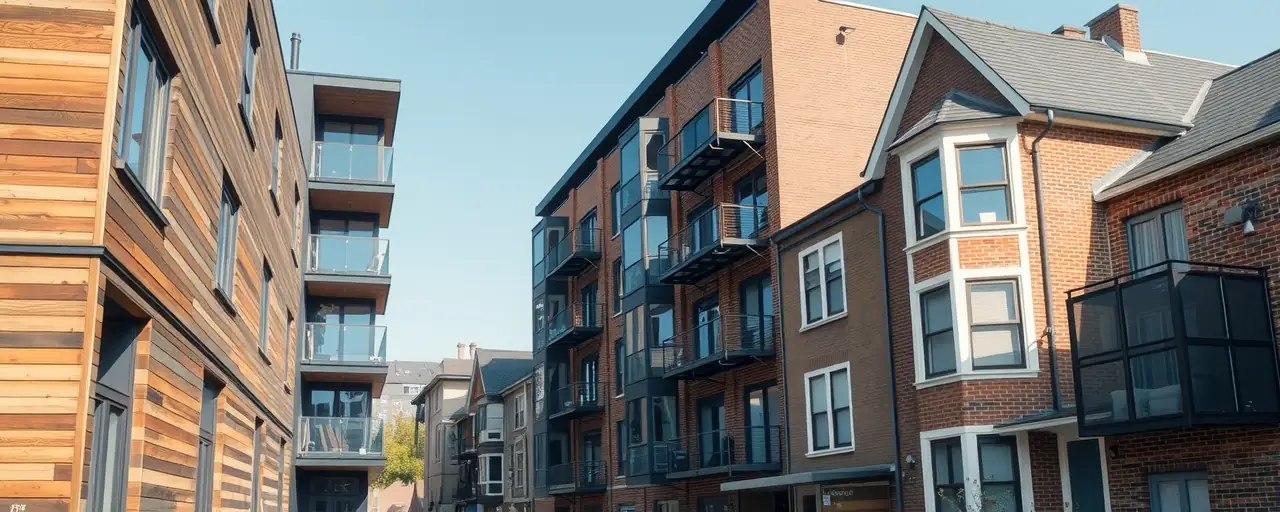A State in Need of Homes
In Delaware, the dream of a stable home feels out of reach for many. Skyrocketing rents and a shortage of affordable housing have left thousands struggling to keep a roof overhead. Governor Matt Meyer has made this crisis a priority, announcing initiatives to speed up housing construction and reduce homelessness across the state. These efforts aim to address a growing problem that affects everyone from low-income families to young professionals.
The numbers paint a stark picture. Nearly 50,000 Delawareans applied for housing assistance when the state reopened its public housing waitlists earlier this year. This overwhelming demand highlights a gap between what people can afford and what the market provides. Nationwide, the affordable housing shortage is even more severe, with only 35 affordable units available for every 100 low-income renters. Delaware’s response could set a precedent, but it faces significant hurdles.
Building Faster, Helping Sooner
One of Meyer’s key moves is to streamline the permitting process for affordable housing projects. By cutting red tape, the state hopes to encourage developers to build more units quickly. This approach targets a critical bottleneck: the time it takes to get projects off the ground. Faster approvals could mean more homes for families who are currently priced out of the market or living in unstable conditions.
At the same time, Meyer has reestablished the Delaware Interagency Collaborative to End Homelessness. This group brings together state agencies, nonprofits, and local governments to coordinate efforts. Their ambitious goal is to cut homelessness in half and eliminate youth homelessness within five years. The plan relies on data to identify needs and direct resources effectively, but success depends on cooperation across a complex network of stakeholders.
These initiatives build on earlier efforts, like the state’s 2021 rental assistance program and the conversion of hotels into emergency shelters during the pandemic. Yet, the scale of the challenge remains daunting. Rising construction costs and limited land availability complicate efforts to build enough homes, while homelessness continues to climb, driven by economic pressures and systemic barriers.
A National Crisis in Focus
Delaware’s housing woes are part of a broader national crisis. Across the United States, rents have surged nearly 19 percent since 2001, while renter incomes have barely budged. This mismatch leaves half of all renters spending more than 30 percent of their income on housing, a threshold that strains budgets and risks eviction. In states like Nevada and California, the shortage of affordable units is even more acute, pushing more people toward homelessness.
Zoning and land-use regulations play a big role in this problem. Rules that limit multifamily housing or impose large lot sizes drive up costs and restrict supply. Some cities, like Minneapolis, have seen success by loosening these restrictions, leading to more construction and stable rents. Delaware’s Affordable Housing Production Task Force has proposed similar reforms, including zoning changes and tenant protections, to boost supply and support vulnerable residents.
Funding is another sticking point. Federal programs like Housing Choice Vouchers and Homeless Assistance Grants are critical but often fall short of demand. Recent debates in Congress highlight competing priorities: some lawmakers push for increased investment, while others advocate for cuts or reallocating funds to local governments. These decisions will shape how much support Delaware and other states can provide.
Different Paths to Solutions
Not everyone agrees on how to tackle housing and homelessness. Some policymakers emphasize providing housing first, arguing that stability is the foundation for addressing issues like mental health or addiction. Studies show this approach has reduced chronic homelessness among veterans by over 50 percent. Advocates for this model call for more federal funding and stronger renter protections to prevent evictions and keep people housed.
Others argue for a different strategy, focusing on personal responsibility and treatment before housing. They suggest that providing homes without addressing underlying issues can perpetuate dependency. Proposals like those in the Trump administration’s Project 2025 agenda reflect this view, advocating for reduced federal involvement and more local control. Supporters believe faith-based groups and community organizations are better equipped to deliver tailored solutions.
Both sides have valid points, but the debate often overlooks a shared goal: ensuring people have safe, affordable places to live. Delaware’s approach tries to balance these perspectives by combining immediate housing solutions with long-term reforms. Whether this middle ground can deliver results remains an open question.
What Lies Ahead
Delaware’s efforts to address housing and homelessness are a bold step toward change. Streamlined permitting, coordinated agencies, and proposed zoning reforms show a commitment to tackling the crisis head-on. But the road ahead is steep. Rising costs, limited funding, and competing priorities could slow progress, and the state’s plans will need sustained support to make a lasting impact.
For the thousands of Delawareans waiting for affordable homes, these initiatives offer hope but no guarantees. The success of these efforts will depend on whether the state can turn ambitious goals into tangible results. As the nation watches, Delaware’s experience could offer lessons for other communities grappling with the same challenges, proving that even the toughest problems can be met with determination and creativity.
